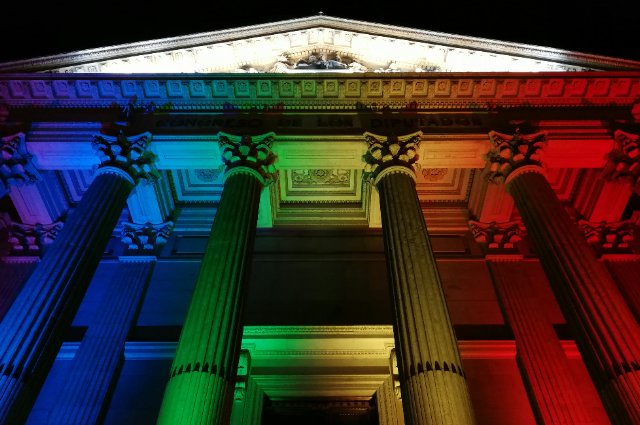
There are days when I just sit and think about how weird it is. Love used to be illegal here. Well, not love exactly—but the kind I have. Something so personal, so much a part of who you are, and the state had opinions about it. Being queer in India wasn't just about loving differently. It was about being a criminal for existing.
Section 377's gone now, sure. But honestly? The fear hasn't left. I see it in how cops still look at us. How families still react. How people lower their voices when they talk about "those people."
I'm in law school, so I read a lot of court judgments. They're full of beautiful words—dignity, privacy, constitutional morality. When the Supreme Court finally struck down 377 in Navtej Singh Johar (2018), the judgment was gorgeous. Justice Chandrachud wrote about love being a fundamental part of life itself. I remember reading it and thinking, "Finally."
But here's the thing about law. It doesn't change hearts overnight.
Police still raid queer events. Trans people get harassed under random local laws. Couples get blackmailed by people claiming to protect "Indian values." Section 377 might be history, but other laws have stepped in to fill the gap. The Immoral Traffic Act still targets trans women. The 2019 Trans Rights Act—despite its name—basically says you can't just be trans. You have to prove it. To bureaucrats. Who probably don't get it anyway.
Law school's taught me that law isn't neutral. Never has been. It protects who society thinks deserve protection.
Trans people didn't even legally exist until NALSA in 2014. Before that? Invisible. The Constitution talked about equality for everyone, but "everyone" apparently had limits. NALSA was revolutionary—it said people could self-identify their gender. But five years later, the government basically took that back. Medical certificates, committees, and gatekeeping. All in the name of "protection."
The worst part? How slow everything is. Families still disown queer kids. Landlords won't rent to us. Schools don't know how to handle queer students. Workplaces discriminate quietly. Therapists try to "fix" us. And the law? It's mostly silent in these spaces. Not because it approves—just because it doesn't bother looking.
Articles 14, 15, 19, 21—they're supposed to guarantee equality, freedom, non-discrimination, and life with dignity. But they're just words until someone fights for them in court. Until a queer person stands up and says, "I exist and I have rights too." Even then, change comes in bits and pieces. A judgment here, a directive there. Recognition usually means paperwork, not actual safety.
I don't want to sound completely negative, though. Things are changing. Pride marches get bigger every year. More queer groups are organizing. Universities are setting up gender cells. Some judges are starting to get it.
When the Supreme Court refused to legalize same-sex marriage in Supriyo (2023), I was disappointed. But Justice Kaul's opinion talked about civil unions and anti-discrimination laws. That's something, at least. Maybe not a breakthrough, but progress moves slowly.
Studying law while being queer is complicated. It's empowering because now I can name the systems trying to erase us. But it's exhausting seeing how deep those systems go. Criminalizing queerness was never just about one colonial-era law. It was about the idea that being different makes you dangerous. The state needs to control you.
That idea's still around. In classrooms, courtrooms, and casual conversations about what's "normal."
Maybe someday things will be different. Maybe being queer won't need legal justification. Maybe existing won't be political. Until then, every story we tell, every case we fight, every essay like this—it's all resistance. Writing about queerness in legal language that once tried to erase us? That's revolutionary in its own quiet way.
References
- Navtej Singh Johar v. Union of India, (2018) 10 SCC 1
- National Legal Services Authority (NALSA) v. Union of India, (2014) 5 SCC 438
- Supriyo v. Union of India, (2023) SCC OnLine SC 1381
- The Transgender Persons (Protection of Rights) Act, 2019
- The Immoral Traffic (Prevention) Act, 1956
- Human Rights Watch. "India: Events of 2023." World Report 2024
- Bhattacharjee, Madhurima. "Law, Queer Bodies and the Politics of Recognition in India." Economic and Political Weekly, 2021
